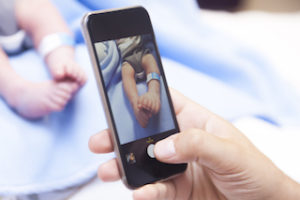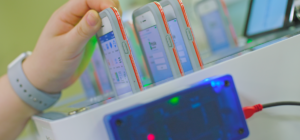Talk and text are essential components of any clinical communication and collaboration platform. But being able to see the person on the other end, even when that person may be miles or even states away, is invaluable.
That’s why mobile-based HD video chat—a capability we recently announced as part of our MH-CURE Platform—can revolutionize the way clinicians do their jobs. It has the potential to save costs, streamline communications and provide more flexibility for clinician-to-clinician collaboration.
With telemedicine on the rise, this new development isn’t surprising. According to the American Hospital Association, more than 3 in 4 hospitals in the United States use video or other solutions to remotely connect participants in the care continuum. But there’s an important part of the story that news headlines tend to miss: Much of the publicity around videoconferencing in healthcare focuses on remotely connecting doctors with their patients. That’s certainly a big role that video chat can play in the clinic, but it’s not the only one.
Indeed, video chat has the potential to dramatically transform clinical care in other ways—with tangible benefits not only for patient outcomes, but HCAHPS scores, too. After all, the HCAHPS survey weighs heavily on providers’ communication and responsiveness: Two important indicators of hospital experience.
These applications of video chat in healthcare could amply check both boxes:
1. Convenient E-Consults
By and large, physicians are in greater demand than ever—and ongoing shortages only widen the gap. A 2018 report by the Association of American Medical Colleges (AAMC) stated that, due to the aging American population, the United States could have a shortfall of up to 120,000 doctors. According to the AAMC, the majority of the shortage will come from specialist areas.
So, it’s no surprise that the dawn of e-consults is already upon us: Hospitals have increasingly opted toward video chat for doctor-to-doctor consultations with cost-saving, experience-improving results: One study found that video-enabled consults saved as much as $500 in Medicaid costs per patient over a six-month period.
Take a small community hospital in a rural area, for example. If a patient’s case calls for specialized expertise that existing staff members don’t have, the care team either refers the patient to another hospital or requests the out-of-town specialist to come to them.
Either way, it’s an impact on the patient experience—having to travel a greater distance to a new facility or wait for the consulting physician to arrive—and the hospital’s bottom line for arranging those logistics.
But what if the care team had access to a video chat function, like the one built into MH-CURE? They’d easily be able to videoconference the right specialist, regardless of where that specialist resided. They could get instantaneous feedback, answers to their questions and a clinical recommendation on the right path forward.
The patient gets a more seamless experience—and thanks to clear, fast communication enabled by the video consult, potentially a better outcome, too.
2. Video-Verified Transfers of Care
Up to 80 percent of medical errors are caused by communication mix-ups during patient transfers—like between intensive care and a step-down unit, for example. And despite even the strictest adherence to guidelines and protocols, communication breakdowns still happen between the sender and receiver of transferred patients.
Fortunately, HIPAA-compliant video chat offers something other forms of communication lack: a face-to-face connection. Speaking with someone face to face can cut down on the chances of miscommunication, according to a study published in the Journal of Neuroscience.
Using video chat during patient hand-offs or to confirm universal protocol can clear up any lingering confusion and make sure the patient is where they need to be. That way, both senders and receivers can collaborate in real-time to reduce the chances of error at any point before, during and after the transfer.
3. Education and Training
Video chat also has the potential to bring instant medical education and training directly to the clinic, when clinicians need it most.
Consider the many scenarios where training gaps may exist in your facility, for example: The purchase of new medical equipment, the roll-out of new protocols, guidelines or procedures, or even onboarding a new employee.
Imagine being able to ask and answer questions through video chat, rather than playing phone tag to get a response, or even having to file a support request. How much time, money and risk would it save to provide real-time, visual tutorials with the opportunity to engage in back-and-forth dialogue until the care team member felt confident with the new material?
That’s the promise of mobile videoconferencing, and together with MH-CURE’s existing capabilities—including InterApp Launch Points that enable seamless integration with other medical reference tools—it could dramatically improve the way care teams build skills, deliver care and improve workflows overall.
Team-to-Team, Screen-to-Screen
Never before have members of the care continuum been so geographically diverse—but likewise, they’ve never been so connected, either. With the tap of a smartphone button, video chat connects care teams to accelerate and enhance care delivery. As a result, health systems have the flexibility to collaborate in any number of ways in order to provide the very best care.
After all, you might say that talk, text and video are the quintessential trio of communications in healthcare. Here at Mobile Heartbeat, we’re happy to offer a tool that does all three and more.
To learn more about Mobile Heartbeat’s video chat feature on the MH-CURE Platform, download the free datasheet with sample use cases.








